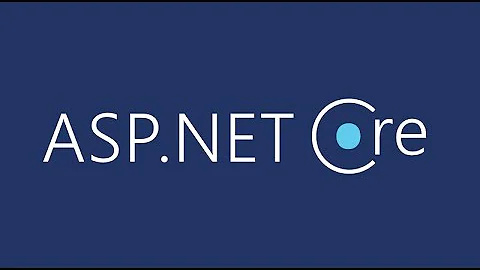How to convert View Model into JSON object in ASP.NET MVC?
Solution 1
In mvc3 with razor @Html.Raw(Json.Encode(object)) seems to do the trick.
Solution 2
Well done, you've only just started using MVC and you've found its first major flaw.
You don't really want to be converting it to JSON in the view, and you don't really want to convert it in the controller, as neither of these locations make sense. Unfortunately, you're stuck with this situation.
The best thing I've found to do is send the JSON to the view in a ViewModel, like this:
var data = somedata;
var viewModel = new ViewModel();
var serializer = new JavaScriptSerializer();
viewModel.JsonData = serializer.Serialize(data);
return View("viewname", viewModel);
then use
<%= Model.JsonData %>
in your view. Be aware that the standard .NET JavaScriptSerializer is pretty crap.
doing it in the controller at least makes it testable (although not exactly like the above - you probably want to take an ISerializer as a dependency so you can mock it)
Update also, regarding your JavaScript, it would be good practice to wrap ALL the widget JS you have above like so:
(
// all js here
)();
this way if you put multiple widgets on a page, you won't get conflicts (unless you need to access the methods from elsewhere in the page, but in that case you should be registering the widget with some widget framework anyway). It may not be a problem now, but it would be good practice to add the brackets now to save yourself muchos effort in the future when it becomes a requirement, it's also good OO practice to encapsulate the functionality.
Solution 3
I found it to be pretty nice to do it like this (usage in the view):
@Html.HiddenJsonFor(m => m.TrackingTypes)
Here is the according helper method Extension class:
public static class DataHelpers
{
public static MvcHtmlString HiddenJsonFor<TModel, TProperty>(this HtmlHelper<TModel> htmlHelper, Expression<Func<TModel, TProperty>> expression)
{
return HiddenJsonFor(htmlHelper, expression, (IDictionary<string, object>) null);
}
public static MvcHtmlString HiddenJsonFor<TModel, TProperty>(this HtmlHelper<TModel> htmlHelper, Expression<Func<TModel, TProperty>> expression, object htmlAttributes)
{
return HiddenJsonFor(htmlHelper, expression, HtmlHelper.AnonymousObjectToHtmlAttributes(htmlAttributes));
}
public static MvcHtmlString HiddenJsonFor<TModel, TProperty>(this HtmlHelper<TModel> htmlHelper, Expression<Func<TModel, TProperty>> expression, IDictionary<string, object> htmlAttributes)
{
var name = ExpressionHelper.GetExpressionText(expression);
var metadata = ModelMetadata.FromLambdaExpression(expression, htmlHelper.ViewData);
var tagBuilder = new TagBuilder("input");
tagBuilder.MergeAttributes(htmlAttributes);
tagBuilder.MergeAttribute("name", name);
tagBuilder.MergeAttribute("type", "hidden");
var json = JsonConvert.SerializeObject(metadata.Model);
tagBuilder.MergeAttribute("value", json);
return MvcHtmlString.Create(tagBuilder.ToString());
}
}
It is not super-sofisticated, but it solves the problem of where to put it (in Controller or in view?) The answer is obviously: neither ;)
Solution 4
You can use Json from the action directly,
Your action would be something like this:
virtual public JsonResult DisplaySomeWidget(int id)
{
SomeModelView returnData = someDataMapper.getbyid(id);
return Json(returnData);
}
Edit
Just saw that you assume this is the Model of a View so the above isn't strictly correct, you would have to make an Ajax call to the controller method to get this, the ascx would not then have a model per se, I will leave my code in just in case it is useful to you and you can amend the call
Edit 2 just put id into the code
Solution 5
@Html.Raw(Json.Encode(object)) can be used to convert the View Modal Object to JSON
Related videos on Youtube
Comments
-
Chris Stephens over 3 years
I am a Java developer, new to .NET. I am working on a .NET MVC2 project where I want to have a partial view to wrap a widget. Each JavaScript widget object has a JSON data object that would be populated by the model data. Then methods to update this data are bound to events when data is changed in the widget or if that data is changed in another widget.
The code is something like this:
MyController:virtual public ActionResult DisplaySomeWidget(int id) { SomeModelView returnData = someDataMapper.getbyid(1); return View(myview, returnData); }myview.ascx:<%@ Control Language="C#" Inherits="System.Web.Mvc.ViewUserControl<SomeModelView>" %> <script type="text/javascript"> //creates base widget object; var thisWidgetName = new Widget(); thisWidgetName.updateTable = function() { // UpdatesData }; $(document).ready(function () { thisWidgetName.data = <% converttoJSON(model) %> $(document).bind('DATA_CHANGED', thisWidgetName.updateTable()); }); </script> <div><%:model.name%></div>What I don’t know is how to send the data over as
SomeModelViewand then be able to use that to populate the widget as well as convert that to JSON. I had seen some real simple ways to do it in the controller but not in the view. I figure this is a basic question but I’ve been going for a few hours trying to make this slick.-
Piotr Kula almost 11 yearsI know this is an old question. But as of today there are better ways to do it. Don't mix JSON inline with your View result. JSON is easily seriales via AJAX and can be treated like objects. Anything in JavaScript should be separate from the View. You can easily return models without any effort via a Controller.
-
Suncat2000 almost 3 years@PiotrKula Sometimes order of initialization suggests a preference regarding where JavaScript is included and assigned. There is always a level of effort, but it sometimes differs in amount depending on where it's placed. Inline JavaScript declarations and initializations are acceptable in a View to avoid inconvenience and greater effort.
-
-
Andrew Bullock almost 14 yearsbut he cant render this into the view, he'd have to make a 2nd ajax call
-
Chris Stephens almost 14 yearsThanks, I was originally doing this using a jQuery get json call and was planning on having the HTML elements populate them selves from json. However, the pattern we are following right now is that our views should return a modelView and that is the easiest way to populate basic HTML elements like tables etc. I could send over the same data in JSON format as ViewData but it seems wasteful.
-
Chris Stephens almost 14 yearsThis looks interesting. I was going to just make a copy of the data as json and pass it as viewData but this way it looks more interesting. I'll play with this and let you know. BTW this is my first time posting a question on stackoverflow and it took what..5 minutes to get good responses, that is awesome!!
-
Andrew Bullock almost 14 yearsnothings wrong with it, its just not customisable, if you want any custom value formatting you have to do it before hand, basically making everything a string :( this is most prominent with dates. i know there are easy workarounds, but they shouldnt be necessary!
-
Chris Stephens almost 14 years@Update I was going see about using a .net static counter of that widget to generate a unique object name. But what you wrote looks like it would accomplish the same thing and do it slicker. Also I did look into binding the creation of a widget "new_widget_event' to a page level object to track them but the original reason for doing that became OBE. So I might revisit that later. thanks for all the help I'm going to post a modified version of what you suggested but put explain why I like it better.
-
Andrew Bullock about 12 yearsi retract my previous statement "theres nothing wrong with it". There's everything wrong with it.
-
AaronLS over 11 years+1 I used Html.Raw, but never found Json.Encode and just used JavaScriptSerializer to add the string in the controller to the view model
-
PJH over 11 yearsThat works like a charm. I think it works better in the view in certain instances.
-
Carl Heinrich Hancke over 11 yearsThis approach works even when you want to pass the resulting JSON to Javascript. Razor complains with the green squiggles if you put the @Html.Raw(...) code as a function parameter inside <script> tags, but the JSON does indeed make it to the JS being called. Very handy & slick. +1
-
 John almost 11 yearsThis was nice and clean in my opinion and wrapped up in a reusable helper. Cheers, J
John almost 11 yearsThis was nice and clean in my opinion and wrapped up in a reusable helper. Cheers, J -
Piotr Kula almost 11 yearsWhy do you say that we can't return JSON from the controller. That is how its supposed to be done. Using
JavaScriptSerializerorReturn Json(object)both use the same serializers. Also posting the same JSON back to the controller will rebuild the object for you as long as you define the correct model. Maybe during MVC2 it was a major drawback.. but today its a breeze and very convenient. You should update your answer to reflect this. -
Piotr Kula almost 11 yearsThis is the way to do it since MVC3 and should be returned from a controller. Don't embed json into your Viewresult. Instead make a controller to handle the JSON separately and do a JSON request via AJAX. If you need JSON on the view you are doing something wrong. Either use a ViewModel or something else.
-
Piotr Kula almost 11 yearsYOu should NOT be embedding JSON with a View Result. The OP either needs to stick to standard MVC practised and return a model or viewmodel or do an AJAX. There is absolutely NO REASON to embed JSON with a view. That is just very dirty code. This answer is the correct way and the recommended way by Microsoft Practices. The downvote was unnecessary this is definitely the correct answer. We should not encourage bad coding practices. Either JSON via AJAX or Models via Views. Nobody likes spaghetti code with mixed markup!
-
Samuel about 10 yearsDoes Json.Encode do the same thing as Newtonsoft.Json.JsonConvert.SerializeObject?
-
Ifan Iqbal almost 10 yearsIt even works on ASP.NET MVC 5. But don't forget to add
[ScriptIgnore]onvirtualproperties to avoid circular reference. -
sam almost 10 yearsJson.Encode can be found in System.Web.Helpers which seems to come with the .NET framework 4
-
 mono68 over 9 yearsJson.Encode encodes my 2-dimensional array to a 1-dimensional array in json. Newtonsoft.Json.JsonConvert.SerializeObject serializes the two dimensions properly into json. So I suggest to use the latter one.
mono68 over 9 yearsJson.Encode encodes my 2-dimensional array to a 1-dimensional array in json. Newtonsoft.Json.JsonConvert.SerializeObject serializes the two dimensions properly into json. So I suggest to use the latter one. -
 Krisztián Balla over 8 yearsThis solution will result in the following problem: stackoverflow.com/questions/10543953/…
Krisztián Balla over 8 yearsThis solution will result in the following problem: stackoverflow.com/questions/10543953/… -
 KoalaBear about 8 yearsWhen using MVC 6 (maybe also 5) you need to use
KoalaBear about 8 yearsWhen using MVC 6 (maybe also 5) you need to useJson.Serializeinstead of Encode. -
crush almost 8 yearsThe biggest problem with JsonHelper, as Andrew said, is it's not customizable. Want camelCase properties? Too bad. Roll your own JsonHelper and let it be often confused with the JsonHelper that you can't hide.
-
Muflix almost 8 yearsis there a way back from json object to create original model object ?
-
Jeroen about 7 yearsAdapted to:
<pre>@Html.Raw(Newtonsoft.Json.JsonConvert.SerializeObject(Model, Newtonsoft.Json.Formatting.Indented))</pre> -
David about 7 yearsFor some reason Json.Serialize changes my property names from Pascal case to camelCase
-
Samra almost 7 yearsIf i do var json = @Html.Raw(Json.Encode(Model.x)) and alert(json[i])....it just returns [Object object] how can i access a property of my Model element
-
Muflix over 5 yearsWhat is namespace for
Json.Serialize?







